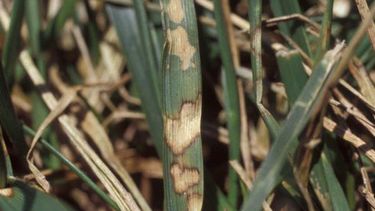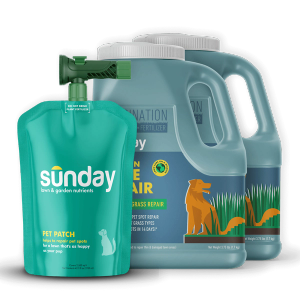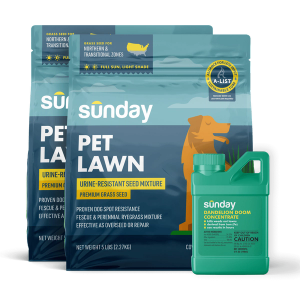It’s one of the most frustrating sights for a homeowner: perfect green grass with spreading circles of brown. Your first instinct might be to water it more, assuming it’s just dry. But if the problem is brown patch fungus, extra water is the last thing your lawn needs.
Is it really Brown Patch lawn disease?
Proper identification is step one. Many issues can cause brown spots, but the brown patch grass fungus (Rhizoctonia solani) leaves specific clues. Before you take any action, get a close-up look at the affected area and check for these signs:
Irregular circles: Patches are often roughly circular but can be irregular, ranging in size from a few inches to several feet.
The "Lesion" test: This is the key identifier. On the edge of the patch, examine individual blades of grass. You’ll find tan, oblong spots (lesions) with a distinct dark brown or purplish border. This is the calling card of the disease.
The "Smoke Ring": On mornings with heavy dew, you might see a grayish-white, web-like ring around the edge of the patch. This is a telltale sign of active fungus, and a dead giveaway.

If you don't see these specific lesions, you may be dealing with other brown or yellow lawn patches, like drought stress, insects, or even pet spots. But if you've confirmed it, the next question is why it showed up.
What's really causing Brown Patch in your lawn?
Brown patch fungus exists in almost all soils. It only becomes a problem when conditions give it a major advantage over your grass. Think of these factors as vulnerabilities in your lawn's defense system:
- Prolonged wetness: The fungus activates when grass blades stay wet for more than 10-12 hours. This is common during strings of humid days, rainy spells, or from watering your lawn at night.
- Heat and humidity: The disease thrives in the summer heat, particularly when nighttime temperatures remain above 60°F and daytime temperatures reach the 80°F range.
- Thick thatch layer: A thatch layer over ½ inch thick acts like a soggy welcome mat, trapping moisture and providing the perfect home for fungus.
- Excess nitrogen: Applying a heavy dose of fertilizer at the wrong time can lead to rapid, weak grass growth that is highly susceptible to disease.
How to treat Brown Patch fungus
Forget quick fixes. The immediate goal is to stop the fungus from spreading by making your lawn an environment where it can't thrive.
These first steps are your treatment plan. Repairing the damaged spots with new seed is a crucial second phase, but it should only happen after the disease is under control.
Change the environment
Immediately adjust your watering schedule. Water only in the early morning so the sun can quickly dry the grass blades. Water deeply and infrequently to encourage strong roots without creating a constantly damp surface. If you can, prune back nearby shrubs to improve airflow.
Sunday Tip:
Psst. Learn how to fix your overwatered lawn.
Pause on fertilizer
Do not apply nitrogen fertilizer while the disease is active. You'll only be feeding the fungus and encouraging weak growth. Let your lawn rest and recover first.
Break up the disease
Use a leaf rake to gently fluff up the matted grass in the affected spots. This helps break up the fungal mat, improves air circulation, and allows the area to dry out.
Sunday Tip:
If your thatch levels reach over 1” you may occasionally need to lightly rake away thatch to reduce opportunities for high moisture and fungus to move in.
Overseed grasses with disease tolerance
First, reseed or resod affected areas as needed. Then continue to overseed with disease-resistant grass types.
Should you use a fungicide for Brown Patch?
When you search for solutions, you'll see countless options for fungicides for brown patch fungus. While chemical fungicides can stop the disease's spread, it's important to understand what they do (and don't do).
A fungicide is a temporary, reactive fix. It kills the active fungus but does nothing to address the underlying conditions that allowed disease to take hold. Without correcting the core issues (watering, nutrients, thatch, airflow), the disease will likely return.
At Sunday, we believe in an Integrated Pest Management (IPM) approach. We focus on fixing the root cause and creating a healthy ecosystem first. By improving your lawn's environment and health, you build natural defenses that make fungicides unnecessary for most common lawn diseases.
Preventing Brown Patch with proper repair
The only way to close out brown patch fungus treatment is repair and prevention. Once you've controlled the active outbreak and cooler, drier weather has returned, it's time to build a stronger lawn.
- A Sunday lawn plan is designed for resilience. We focus on soil health and delivering nutrients that promote steady growth, making your lawn more resilient against turf disease.
- Not all grass seed is created equal. When repairing bare spots, use a high-quality seed blend with proven disease resistance. Sunday’s grass seed varieties are A-LIST approved for their superior performance and sustainability.
By focusing on the health of your soil and the strength of your grass, you can move from constantly reacting to problems to proactively preventing them.
Ready to build a lawn that fights its own battles?
Sunday's custom plans are based on your soil and climate, giving your grass exactly what it needs to become more resilient to challenges like brown patch fungus.
Cited sources
Brown Patch. NC State Extension.
Lawn Diseases: Prevention and Management Guidelines. UC IPM.
Turf: Brown Patch. UMass Amherst Extension.
Turfgrass Diseases: Brown Patch. PennState Extension.



















